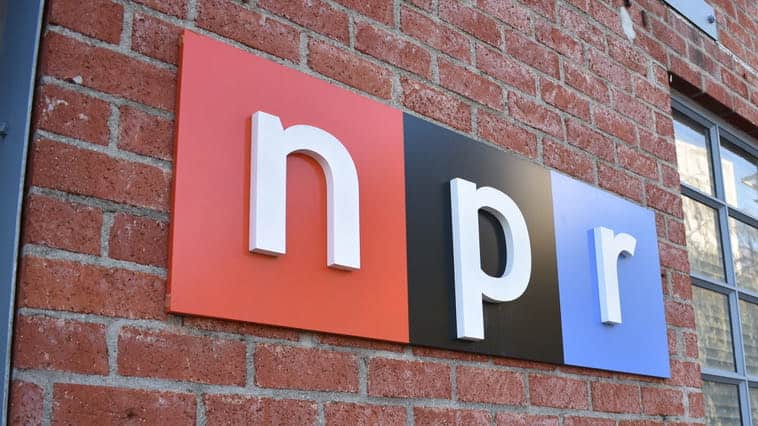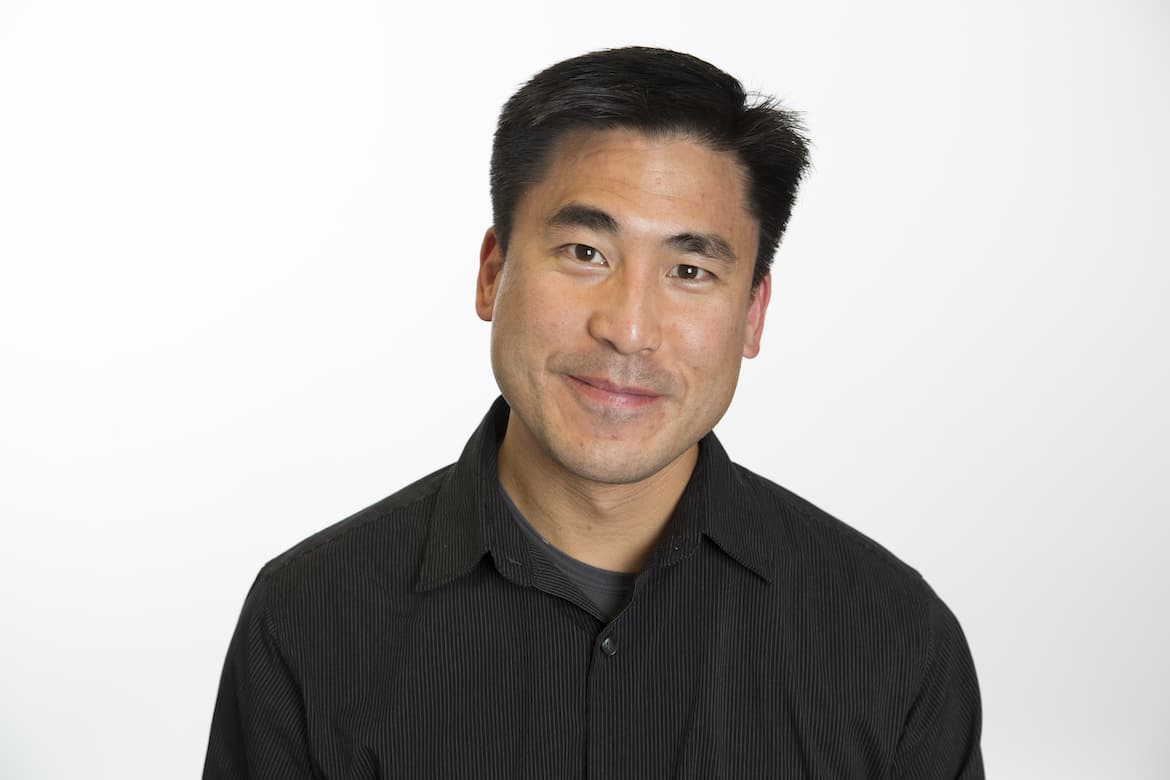How a public broadcasting system ‘asleep at the transmitter’ has overlooked Latino listeners

Tyler Falk
What is the place of Latino listeners in public radio? In a new book, Christopher Chávez argues that by catering to white listeners, NPR has pushed Latinos to the periphery of its audience. In this excerpt from The Sound of Exclusion: NPR and the Latinx Public, Chávez looks back at public broadcasting’s track record in prioritizing service to diverse audiences.
When I spoke with NPR’s Bill Siemering about how the network originally conceived of its listener, he affirmed that NPR was initially designed to serve ethnically diverse audiences. However, Siemering’s conception of diversity was centered primarily on Black and Indigenous communities. This orientation came largely from his own professional experiences. Siemering had previously served as general manager of college radio station WBFO-FM in Buffalo. There, he spent his first years at the station learning about the local community, conducting interviews with the African American community, which were used to develop a series called To Be Negro. Siemering also worked with Indigenous communities living at nearby Niagara Falls to produce a series of programs on the Iroquois Confederacy called Nation Within a Nation.
Siemering admitted that Latinxs were not much of a consideration when he wrote his mission statement, stating, “At that time, there wasn’t much awareness about Latinos.” This is to be expected. In 1970, when the network first aired, Latinxs accounted for only 4.5 percent of the total U.S. population.1 But when I asked Siemering how a single network was meant to appeal to the broad spectrum of the nation, he stated that a unifying trait of NPR’s audience is curiosity. “Being curious is very important,” Siemering told me. “That cuts across all divides.”
The notion of curiosity has been a defining characteristic of the NPR audience over the course of its history and is reflected in the marketing materials NPR uses to sell its audiences to corporate underwriters. For example, NPR markets a number of products under its “Curious Listener” series, which educates listeners on how to appreciate music and culture. However, Siemering was firm in his belief that NPR should not consider the economic value of its listeners to be its paramount consideration. When we spoke, he read aloud a sentence in the mission statement that he felt was particularly important: “NPR would not regard its audience as a market.” Yet, this is exactly how the network regards the listener. The research conducted by Audience Research Analysis was designed to cultivate a listening audience that would support the network financially. This strategy has, in turn, informed how NPR conceives of, and pursues, its ideal Latinx listener.
There is little specific mention of Latinxs or Hispanics in “Public Television: A Program for Action,”2 the Carnegie Commission’s report on public broadcasting, which prompted the passage of the Public Broadcasting Act in 1967. This is likely due to the fact that the invention of a unified pan-construct termed Hispanic or Latino had not yet been widely employed by marketers, politicians, and activists3. However, the report makes clear that public broadcasting is meant to serve diverse audiences: “America is geographically diverse, ethnically diverse, widely diverse in its interests. American society is proud to be open and pluralistic, repeatedly enriched by the tides of immigration and the flow of social thought. Our varying regions, our varying religious and national and racial groups, our varying needs and social and intellectual interests are the fabric of the American tradition” (p. 14).
Similarly, there is little direct mention of Latinxs in “The Hidden Medium” report4, which made the specific case for public radio. However, the report did make reference to disparate Spanish-speaking communities across the country, which could be served by particular public radio stations. These communities were collapsed into the larger category of “minority groups,” referred to in other parts of the report as “special audiences” and “forgotten audiences.” Often framed as society’s outliers, these groups were characterized as problems that educational radio could solve. For example, the authors argued that there were plans to serve “the disadvantaged,” which included, “the elderly, the chronically ill, the poor, the migrants, the retarded, the ethnic and racial minorities” (p. VIII-2).
The authors also wrote that public radio could provide news for non–English-speaking listeners, referring to a pilot program that had been proposed to serve what they termed “the Spanish-Speaking illiterates in Florida” (p. VIII-4). Based out of an elementary school in Delray Beach, the station was intended to be operated by migrant workers in southern Florida, who could “make their needs known and understood.” Programming would be developed and produced by the community and broadcast both in Spanish and English, offering lessons on conversational English as well as tips on cooking, baby care, health care information, and farm labor news.
Almost a decade after NPR was established, the Carnegie Commission created a second blue-ribbon panel to assess the development of the U.S. public broadcasting system. In its report titled “A Public Trust: The Landmark Report on the Commission on the Future of Public Broadcasting,”5 the commission affirms the notion that public media’s economic interests should not supersede its social mission. This meant that NPR should reach a diverse audience, particularly those ignored by commercial media:
Unlike commercial radio and television, most print media, and many new communications services, public broadcasting creates programs primarily to serve the needs of audiences, not to sell products or meet the demands of the marketplace. This ideal demands that public television and radio attract viewers and listeners whose tastes and interests are significant, but neglected or overlooked by media requiring mass audiences. The noncommercial nature of public broadcasting has important implications for its programs, its relations with creative talent, and its mission to underserved audiences (p. 25).
As early as 1977, the Carnegie Commission realized that NPR had seriously fallen short of its diversity mandate, stating, “The effect of this history is a public radio system that does not reflect the pluralism that is a highly valued characteristic of American society” (p. 193). In January of 1977, the CPB commissioned a task force to examine how public media was faring in addressing the needs of minority publics. Led by Professor Gloria L. Anderson, vice chairman of CPB, the twenty-eight–member coalition met to develop policies that would maximize the growth, development, employment, and participation of minorities in all aspects of public broadcasting. In the words of the committee, their goal was to “set out to determine how well that system by then known as public broadcasting has met, and is meeting, the informational and educational needs and interests of Blacks, Asians, Latinos and Native American citizens” (p xiii).6
After eighteen months of deliberations, the committee issued a scathing report titled “A Formula for Change: The Report of the Task Force on Minorities in Public Broadcasting.”7 In it, the committee identified several barriers to the full participation of minorities in public broadcasting and identified ways by which to overcome them. In its executive summary, the task force described the public broadcasting system as being “asleep at the transmitter” (p. xiii), and the committee found that minority programming was seriously deficient and that proposals for minority programs were rejected at a disproportionately high rate.
- U.S. Census. 2012. “Percent Hispanic of the US Population: 1970–2050.”
- Carnegie Commission on Educational Television. 1967. Public Television: A Program for Action. New York: Bantam Books.
- Mora, Cristina. 2014. Making Hispanics: How Activists, Bureaucrats, and Media Constructed a New American. Chicago: University of Chicago Press.
- Herman W. Land Associates. 1967. The Hidden Medium: A Status Report on Educational Radio in the United States. New York: Herman W. Land Associates.
- Carnegie Commission on the Future of Public Broadcasting. 1979. A Public Trust: The Landmark Report of the Carnegie Commission on the Future of Public Broadcasting. New York: Bantam Books.
- Corporation for Public Broadcasting. 1978. A Formula for Change: The Report of the Task Force on Minorities in Public Broadcasting. Report prepared for the U.S. Department of Health, Education & Welfare National Institute of Education.
- Ibid
Christopher Chávez is an Associate Professor in the School of Journalism and Communication at the University of Oregon and Director of the Center for Latina/o and Latin American Studies. His research lies at the intersection of globalization, media and culture. He is author of Reinventing the Latino Television Viewer: Language Ideology and Practice and is co-editor of Identity: Beyond Tradition and McWorld Neoliberalism.







Chavez does a good job of explaining how public broadcasting historically ignored Hispanic audiences, but he doesn’t bring us up to date or propose specific actions to overcome this serious blind spot. What is public broadcasting now doing to overcome this narrow vision? What should it be doing to expand its coverage of and for Hispanic audiences?
This is not my area of expertise, so please feel free to refute my anecdote with real data. But in general I’ve noticed that most markets seem to do a better job having multiple broadcast outlets that are Spanish-language and often each is catering to a different Latin American ethnic group/country: Mexican, Guatemalan, Puerto Rican, Honduran, Costa Rican, etc. Ownership I’m less sure about, but certainly there seems to be Hispanic people in charge of running the day-to-day operations/programming of the stations, too. Even in pretty “white” cities like, well, a lot of New England (I live in Providence) there are invariably two or three Spanish-language stations…if not six or seven…that’re listenable across most areas. A lot are AM stations, some are FM. Many have become FM outlets thanks to FM translators in recent years.
Whereas there seem to be much fewer African American owned/operated/programmed stations overall. And worse, often when there’s a station targeted towards African Americans…it’s being run/owned by white people as part of a larger conglomerate like iHeart or Cumulus.
I point this out to say that while diversity is ALWAYS important because it informs your staff’s point of view and that inherently broadens their horizons and perspectives….actually attracting a Latino audience might be so difficult as to be pointless, because there’s already a better broadcast outlet in your area that’s invariably going to serve that audience better; they’re speaking that audience’s language, and they’re focusing exclusively on that audience’s needs/wants.
So it’s important to use the right metrics to gauge how well your pubradio station is embracing diversity because if you simply are trying to reach more Latino listeners, you might not only “fail miserably” at it, you might end up missing the ultimate point of a diversified community in your staff and audience.
DISCLAIMER: I cannot overstate how much of a white guy I am. I’m not just a white guy, I’m the WHITEST guy. I’m still groping about trying to figure out the right questions, never mind have any idea what the right answers are. So please forgive me (and correct me) if I’m saying something stupid and/or obvious here.
Funny how analyzing NPR’s reach to the Hispanic or Latino/Latina audience, this piece fails to see a big factor in exclusion.
We are NOT “Latinx”. We are Hispanic. Trying to force this term on us is debilitating, offensive, and outright ignorant. I kindly ask Mr. Chavez to look within himself and learn what the vast majority of the Hispanic community identifies as, rather than going along with the trendy buzzwords of Academia Twitter.
Thank goodness to an end to this madness: https://www.nbcnews.com/news/latino/latino-civil-rights-organization-drops-latinx-official-communication-rcna8203
https://www.newsweek.com/just-2-percent-hispanics-use-term-latinx-40-percent-find-it-offensive-poll-1656412